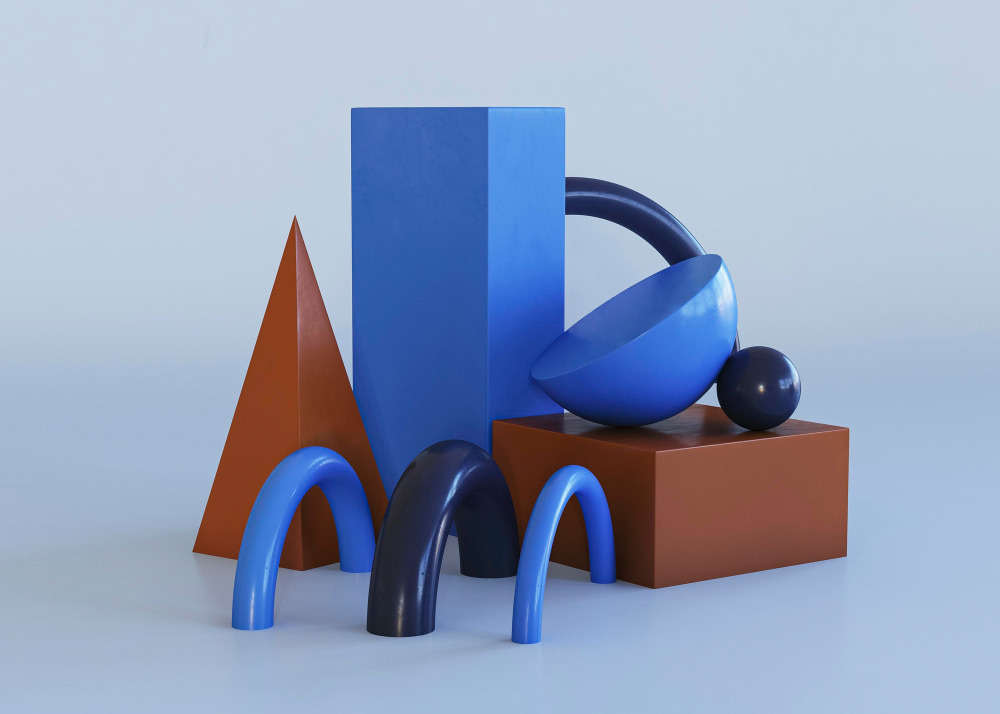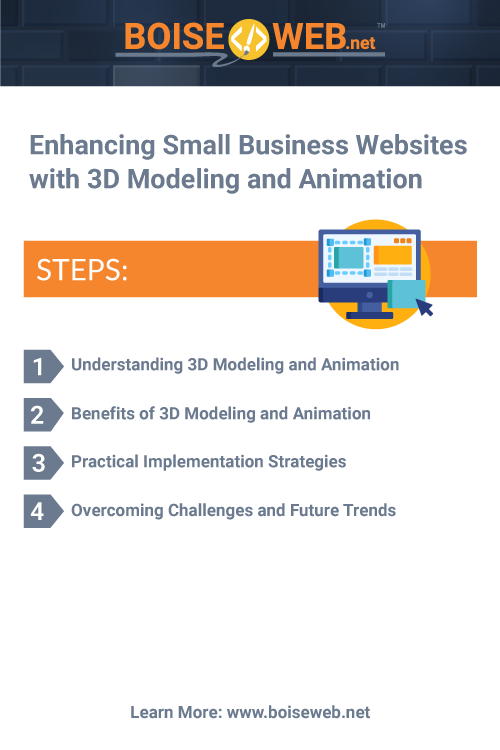In the competitive landscape of the digital world, small businesses strive to stand out and make a lasting impression on their audience. As technology advances, incorporating innovative elements into websites becomes crucial for attracting and engaging visitors. One such powerful tool is 3D modeling and animation, which has evolved from a niche in the entertainment industry to a versatile asset for businesses of all sizes. This article will explore the benefits of integrating 3D modeling and animation into small business websites and how it can elevate the overall user experience.
Understanding 3D Modeling and Animation
Before delving into the impact on small business websites, it’s essential to understand what 3D modeling and animation entail. 3D modeling is creating a three-dimensional representation of an object or scene using specialized software. On the other hand, animation involves bringing these 3D models to life by adding movement and dynamics. Together, they create a visually compelling and immersive experience for users.
Evolution and Accessibility
Over the years, 3D modeling, and animation have undergone significant advancements, making them more accessible to a broader audience. What was once confined to high-end studios is now within reach of small businesses, thanks to user-friendly software and improved computing power. This democratization has paved the way for creative expression and innovation in web design.
Applications Across Industries
While initially associated with the entertainment industry, 3D modeling and animation have found applications across various sectors. From product visualization and architectural walkthroughs to educational simulations and virtual prototypes, the versatility of these technologies is immense. Small businesses can leverage this versatility to create unique and memorable online experiences for their customers.
Benefits of 3D Modeling and Animation for Small Business Websites
Enhanced Visual Appeal
The most apparent advantage of incorporating 3D modeling and animation into a small business website is the enhanced visual appeal. Three-dimensional elements can captivate visitors, making the website more memorable and leaving a lasting impression. Whether it’s a rotating product showcase, an animated logo, or an interactive background, 3D visuals elevate the overall aesthetics of the site.
Improved User Engagement
Engagement is crucial for the success of any website, and 3D modeling and animation can significantly contribute to this aspect. Interactive 3D elements invite users to explore and interact with the content, creating a more engaging and immersive experience. This increased interactivity can lead to longer time spent on the site, reducing bounce rates and improving overall user satisfaction.
Effective Storytelling
Storytelling is a powerful tool in marketing, and 3D modeling and animation provide new avenues for businesses to tell their story. Whether through animated narratives, dynamic visual sequences, or virtual tours, small businesses can convey their brand message in a more compelling and memorable way. This storytelling approach helps establish an emotional connection with the audience, fostering brand loyalty and recognition.
Showcase Products and Services
For businesses that offer tangible products, 3D modeling allows for the creation of realistic and interactive product showcases. Instead of relying on static images, small businesses can present their offerings in a more dynamic and immersive manner. This not only provides a better understanding of the products but also instills confidence in potential customers.
Differentiation from Competitors
In a crowded online marketplace, standing out from the competition is a constant challenge for small businesses. Integrating 3D modeling and animation into the website provides a unique selling point that can set a business apart. The novelty and creativity associated with 3D elements can capture the attention of visitors, making the website more memorable in comparison to competitors relying on traditional approaches.
Practical Implementation Strategies
Collaborating with Design Professionals
While 3D modeling software has become more user-friendly, achieving professional-grade results still requires a certain level of expertise. Small businesses can benefit from collaborating with experienced 3D designers and animators who can bring their creative vision to life. Working with professionals ensures high-quality visuals and a seamless integration into the overall website design.
Balancing Performance and Aesthetics
While 3D elements add visual appeal, it’s crucial to strike a balance between aesthetics and website performance. Heavy graphics and animations can slow down page loading times, leading to a poor user experience. Optimizing 3D assets and employing techniques like lazy loading can help maintain a fast and responsive website without compromising on visual richness.
Responsive Design for All Devices
Given the diverse range of devices through which users access the internet, it’s essential to ensure that 3D elements are responsive and compatible across various screen sizes. A seamless experience on desktops, tablets, and mobile devices contributes to a positive user experience and prevents potential frustration for visitors using different platforms.
Iterative Testing and User Feedback
Implementing 3D modeling and animation should be an iterative process involving testing and gathering user feedback. Conducting usability tests and analyzing how visitors interact with the 3D elements can provide valuable insights into what works well and what may need improvement. Iterative testing ensures continuous refinement and optimization of the website’s 3D features.
Overcoming Challenges and Future Trends
Addressing Technical Limitations
While the benefits of 3D modeling and animation are significant, small businesses may face technical challenges in implementation. These challenges include ensuring cross-browser compatibility, optimizing for various devices, and addressing potential performance issues. By staying informed about best practices and seeking professional guidance, small businesses can overcome these challenges and create a seamless user experience.
Emerging Trends in 3D Technology
As technology continues to advance, new trends in 3D modeling and animation are likely to emerge. Small businesses should stay informed about these trends to remain competitive. Some potential future developments include the integration of augmented reality (AR) and virtual reality (VR) elements into websites, further enhancing the immersive nature of online experiences.
In conclusion, integrating 3D modeling and animation into small business websites offers a myriad of benefits, ranging from enhanced visual appeal and improved user engagement to effective storytelling and product showcasing. As technology becomes more accessible, small businesses can leverage these tools to differentiate themselves in a competitive online landscape. By carefully implementing and optimizing 3D.
The author generated this text in part with GPT-3, OpenAI’s large-scale language-generation model. Upon generating draft language, the author reviewed, edited, and revised the language to their liking and takes ultimate responsibility for the content of this publication.


